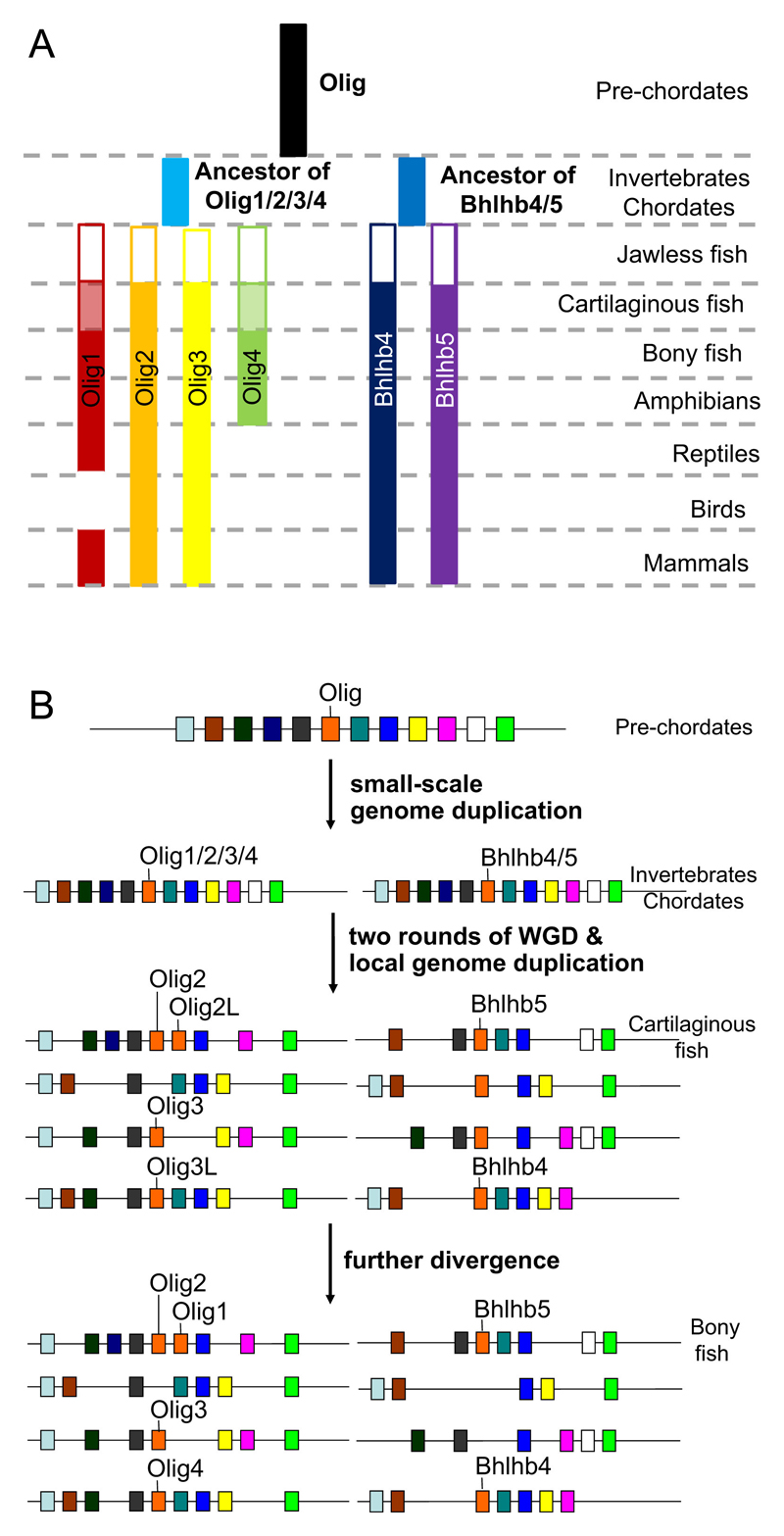Figure 1.
Phylogeny of Olig genes. (A) Olig genes were evolved from a common invertebrate ancestor gene which was duplicated in an early chordate to provide the ancestral genes of Olig1/2/3/4 and Bhlhb4/5. Although we are unsure how many Olig paralogs there are in jawless fish (Agnatha), pre-Olig1 (Olig2-like), Olig2, Olig3, pre-Olig4 (Olig3-like), Bhlhb4 and Bhlhb5 all exist in cartilaginous fish. Olig4 is subsequently lost from all Amniota and Olig1 from Aves. (B) Hypothetical model of Olig gene evolution. A small-scale genomic duplication in the early chordate resulted in the production of ancestors of Olig1/2/3/4 and Bhlhb4/5. After two rounds of whole genome duplication during early vertebrate evolution, accompanied by gene loss, the Olig1/2/3/4 gene ancestor gave rise to Olig2, Olig3 and Olig4 while the Bhlhb4/5 gene ancestor gave rise to Bhlhb4 and Bhlhb5. Meanwhile, a local duplication around the Olig2 locus produced a synteny block containing two Olig2 genes and one of these subsequently underwent recombination with another distantly related bHLH family gene to produce Olig1 (adapted and updated from Li and Richardson, 2009).

